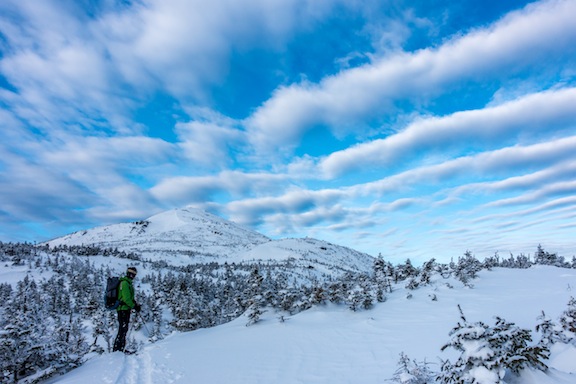FORT SMITH, Ark – Winter recreation is typically easier on the trails, too, with snow buffering any trail erosion. When venturing outdoors this winter, be sure to follow Leave No Trace principles just as closely as other times of the year. One principle that frequently causes confusion is disposing of waste properly. Some aspects, such as carrying out your trash, are clear. Others, such as how to pee and poop, may cause a little more head scratching. Read on for some helpful tips on winter waste disposal considerations.
To start, carry out everything that you brought with you. It should go without saying, but hiding trash under the snow isn’t any better than throwing it on the ground in the summer. The same goes for food scraps. Orange peels and sunflower seed shells buried under the snow are easily uncovered by animals. These foods aren’t part of their natural diet and eating them can be harmful. Animals have enough challenges in the winter without adding a poor diet into the mix. It’s best to have a small, easily accessible trash bag in which to put food and other similar waste. Be mindful that this bag, if insufficiently stuffed in an external backpack pocket, can be torn open by passing tree branches.
Next, there is the human waste consideration. We agree, talking about peeing and pooping in the backcountry can be an awkward topic, especially for those new to the outdoors. Lots of material exists about how to properly manage these backcountry necessities in the summer, but what about the winter?
For starters, move off the trail and at least 200 feet (70 large adult steps) away from any water sources such as streams and lakes. It’s ideal to step a little way off the trail, too, to minimize the visual impact. That said, be careful of the dreaded snow-laden tree branch; it’s waiting to dump an icy present down your neck. When you’re done, cover up the area with some fresh snow to minimize the visual impact. It’s better to pee on open ground and away from vegetation, if possible, so as not to attract animals.
Pooping in the winter can be intimidating and uncomfortable, but it doesn’t have to be either. It may seem extreme, but it’s ideal to pack out your poop in a brand name or homemade WAG bag, which stands for Waste Alleviation Gel. These are quite simply a double-bag system made out of durable and biodegradable material. Inside the bag is a powder that, when moistened, turns into gel and neutralizes the pathogens in feces. When full, place the inner bag in the thicker, durable outer bag for safe transport. It may sound gross, but the whole process is clean and simple.
You can make your own WAG bag of sorts by relieving yourself into a small paper bag with a handful of kitty litter in to help minimize and stabilize moisture and odors. Place this small paper bag into a plastic bag, and zip it shut for safe transport. All waste will soon freeze, thus eliminating odors.
It’s always ideal to dispose of human waste in established pit toilets, also known as thunderboxes or outhouses. Look up the location of campsites and lean-tos before your trip, where pit toilets almost always exist, and incorporate stops at these facilities as needed.
It’s best to pack out your toilet paper when using a pit toilet, and essential in all other circumstances. By disposing of your waste properly, you are protecting wildlife and the visitor experiences of others. Adirondack public land belongs to all of us, and you can help to preserve its health for current and future generations.

